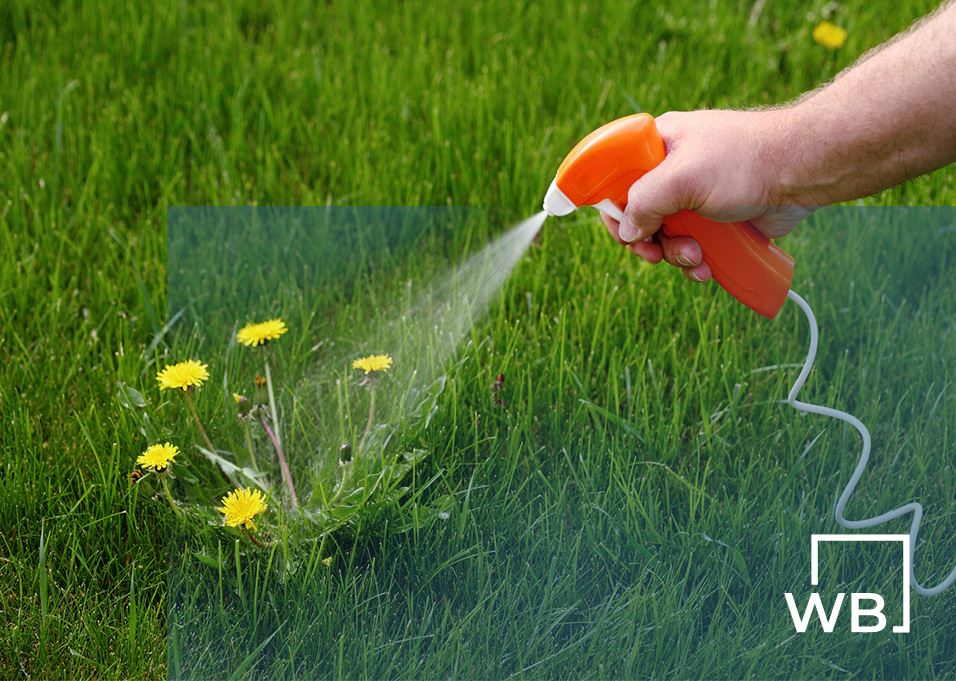
-
History of Success We have successfully obtained landmark verdicts of $2.42 billion against Monsanto (Bayer) in the Roundup Cancer Trials.
-
Trusted Legal Counsel Our attorneys helped negotiate the $10.9 billion Monsanto Roundup Settlements.
-
Recognized Law Firm We are proud to be a Top Plaintiff Law Firm Recognized in U.S. News – Best Lawyers® Best Law Firm and The National Law Journal Elite Trial Lawyers.
Dicamba Cancer Lawsuit
Does Dicamba Cause Cancer?
Researchers from the National Institutes of Health (NIH) have made a startling discovery: the widely used weed killer dicamba increases the risk of liver cancer and bile duct cancer. The finding demonstrates the recklessness of dicamba manufacturers like Monsanto (Bayer), BASF, Syngenta, and Corveta, among others for failing to inform consumers about the dicamba cancer risk.
Wisner Baum is one of the nation’s leading law firms representing individuals in dicamba lawsuits. Our firm’s experience in litigation against companies like Bayer includes billions in jury verdicts. These historic trial victories paved the way for publicly announced settlements for thousands of plaintiffs in the Monsanto Roundup litigation worth approximately $11 billion.
“Bayer and other major agrichemical companies are hoping that dicamba will help turn the page on Roundup and glyphosate,” says attorney R. Brent Wisner, who secured two major jury trial victories against Bayer worth a combined $2.3 billion. “But the science behind dicamba is clear: Bayer’s cancer problem is far from over.”
If you or a family member used dicamba and were later diagnosed with liver cancer or bile duct cancer, you may be eligible to pursue justice and compensation in a lawsuit against the dicamba product manufacturer. To see if you qualify for a dicamba cancer lawsuit, please fill out our case evaluation form below.
Contact us to get started with a free consultation.


Contact our experienced attorneys to learn about your legal options. Your consultation is free and confidential.
What is Dicamba?
First registered for use in 1967, dicamba (3,6-dichloro-2-methoxybenzoic acid) is an herbicide in the chlorophenoxy family of chemicals that selectively kills broadleaf (non-grass) weeds. Dicamba refers to an herbicide’s main ingredient name, not a brand name. Just as glyphosate is the main ingredient in Monsanto's Roundup weed killer, dicamba is the main ingredient in many brand-name herbicides consumers see on store shelves. In the United States, for example, more than 1,100 products contain dicamba, according to the National Pesticide Information Center.
Though dicamba use has fluctuated over the years, it is among the top twenty most used herbicides in agriculture and among the top ten most commonly used residentially.
Common Dicamba Products
- Xtend/XtendiMax (Monsanto/Bayer)
- Engenia (BASF)
- Dianat (BASF)
- FeXapan (Corteva)
- Tavium (Syngenta)
- Vanquish (Syngenta)
- Banvel (Micro Flo)
- Diablo (Nufarm)
- Oracle (Gharda Chemicals)
How Does Dicamba Work?
Dicamba works similarly to 2,4D, another herbicide, in that both act as an auxin agonist. Auxins are natural plant hormones that control growth. Broadleaf (non-grass) weeds like dandelions, clover, chickweed, and ground ivy treated with dicamba grow in uncontrollable and abnormal ways, causing the treated plant to die.
The herbicide is capable of damaging or killing fruiting vegetables, fruit trees, grapes, beans, peas, potatoes, tobacco, flowers, and ornamental plants. It can also damage or kill many species of large trees, including oaks, elms, and maples.
What is Dicamba Used for?
Dicamba is used for post-emergent weed control on a variety of agricultural crops, fallow land, pastures, turfgrass, and rangeland. Dicamba is also registered for non-agricultural uses in residential areas and other sites, including roadways, fences, and golf courses. In fact, dicamba is more likely to be used by residential applicators who use little to no protective gear when compared with agricultural applicators who are more likely to use protective equipment during application. However, due to dicamba’s ability to drift well after exposure, wearing protective gear while spraying it is no barrier to exposure.
Dicamba as a Replacement for Roundup (Glyphosate)
Dicamba use in the U.S. started growing around 2016 when researchers found that Palmer amaranth (pigweed), an invasive weed, had grown resistant to glyphosate (Roundup), one of the most widely used weed killers in the history of agriculture. At the time, consumers were also learning more about the link between glyphosate and cancer, which was confirmed in a 2015 report from the World Health Organization’s International Agency for Research on Cancer. With pigweed affecting crop yields throughout the country and cancer concerns growing, farmers and other consumers increasingly turned to dicamba—due to the prompting of companies like Monsanto—as a weed control tool over glyphosate.
Recently, the U.S. Environmental Protection Agency (EPA) approved genetically engineered dicamba-resistant crops. This will allow farmers to spray dicamba on crops like corn, soybean, and others that are genetically-modified to tolerate the effects of the herbicide.
For Bayer, BASF, and other agrichemical companies, the plan for dicamba appears to follow in the footsteps of glyphosate: the use of glyphosate skyrocketed after genetically-modified Roundup-Ready crops were introduced, and the agrichemical industry has the same hopes for dicamba and dicamba-resistant crops.
But dicamba shares another similarity with glyphosate – both are toxic to animals, people, and the environment. And, it is not just generally toxic but carcinogenic to humans.
Dicamba Cancer Link
Researchers from the NIH uncovered the link between dicamba and cancer by re-evaluating the Agricultural Health Study (AHS), exhaustive research that followed 49,922 pesticide applicators (including 26,412 dicamba applicators) in North Carolina and Iowa for over 20 years to document the incidence of cancer among not just the applicators themselves, but also their spouses.
The AHS began in 1993 with the goal of answering important questions about how agricultural, lifestyle and genetic factors affect the health of farming populations. The study is a collaborative effort involving investigators from the National Cancer Institute, the National Institute of Environmental Health Sciences, the Environmental Protection Agency, and the National Institute for Occupational Safety and Health.
According to the NIH researchers, “dicamba was associated with increased risk of liver and intrahepatic bile duct cancer” and that “[t]his association was robust to exposure lags of up to 20 years.” It is worth noting that the AHS study controlled for various factors such as smoking and alcohol consumption.
The researchers also found that among those in the highest quartile of exposure (the top 25% of users who sprayed the most dicamba), the rate of liver cancer and bile duct cancer increased when compared to those who did not use dicamba.
“When we litigated Roundup cases, Monsanto repeatedly referred to the AHS study as the ‘gold standard,’ said attorney R. Brent Wisner. “It’s important to note here that the AHS study was conducted among pesticide applicators who use protective gear. Even with the gear, the study still showed that dicamba is extremely dangerous and carcinogenic.”
The AHS is not the only study linking dicamba to cancer. Human and animal studies have shown that dicamba is capable of altering liver function in a way that can induce tumors. Another study has found that dicamba is capable of promoting liver cancer in combination with other carcinogens. Like glyphosate, dicamba has also been found to cause DNA damage and induce oxidative stress, two known pathways to cancer.
Ninth Circuit California Dicamba Order – “EPA Substantially Underrated Risks”
In the summer of 2020, the Ninth Circuit Court of Appeals issued an order de-registering dicamba products. The federal appeals court in San Francisco, California said the EPA’s 2018 registration of dicamba “substantially understated risks that it acknowledged and failed entirely to acknowledge other risks.” Although this decision was primarily in the context of dicamba drift, the Ninth Circuit panel further held that EPA understated the acreage on which dicamba was sprayed and the amount of damage the herbicide caused in its 2018 registration.
In October of 2020, just months after the Ninth Circuit order, the EPA registered dicamba products sold by Monsanto (Bayer), Syngenta, Corveta, and BASF in the U.S. The EPA’s registration for dicamba did not reference the now-released AHS study linking the herbicide to liver cancer and bile duct cancer.. The Ninth Circuit’s comments in conjunction with the AHS study’s findings paint an alarming and accurate picture: a carcinogenic chemical that is airborne and does not stay put.
“It is reckless for EPA to assure consumers that dicamba is safe without considering the AHS cancer findings,” says attorney R. Brent Wisner.
-
 Review Finds 87% of Glyphosate Studies Since 2016 Reported Genotoxic Response
Review Finds 87% of Glyphosate Studies Since 2016 Reported Genotoxic Response -
 The World Has Lost a Warrior and Victorious Litigator: Michael J. Miller
The World Has Lost a Warrior and Victorious Litigator: Michael J. Miller -
 Baum Hedlund Submits Public Comment to OEHHA on Glyphosate Warning
Baum Hedlund Submits Public Comment to OEHHA on Glyphosate Warning -
 R. Brent Wisner: Consumer Attorney of the Year Finalist
R. Brent Wisner: Consumer Attorney of the Year Finalist -
 Baum Hedlund Earns Law360 California Regional Powerhouse Award
Baum Hedlund Earns Law360 California Regional Powerhouse Award -
 Brent Wisner Featured in The American Lawyer’s West Trailblazers for 2021
Brent Wisner Featured in The American Lawyer’s West Trailblazers for 2021 -
 ‘2 Billion Dollar Man’ R. Brent Wisner Earns Magazine Cover Story
‘2 Billion Dollar Man’ R. Brent Wisner Earns Magazine Cover Story -
 EPA Buried Internal Report Linking Glyphosate to Non-Hodgkin Lymphoma
EPA Buried Internal Report Linking Glyphosate to Non-Hodgkin Lymphoma
Trial Ready Dicamba Cancer Lawyers with Proven Track Record
The law firm of Wisner Baum knows what it takes to win big cases against big companies. Our firm was the only one in the country to serve on the trial teams for all three of the first Monsanto Roundup trials. These cases resulted in jury verdicts worth $2.424 billion and paved the way for the Roundup settlements worth approximately $11 billion.
Put your case in the hands of award-winning litigators with results that speak for themselves.
What is Dicamba Drift?
One of the problems with dicamba is drift. A highly volatile chemical capable of damaging non-target plants, dicamba can blow with the wind. Farmers have reported that dicamba can drift more than a mile to a neighboring farm, inflicting damage to crops that are not genetically-modified to tolerate the herbicide.
Dicamba vapor can also drift if dicamba is applied during a temperature inversion—an atmospheric condition in which cool air at the earth’s surface traps warmer air above it, allowing the vapor to remain in a concentrated cloud and move off-field during a light wind. The herbicide’s vapor can drift if dicamba volatilizes after it has come to rest on plants or the ground. Volatilization occurs when dicamba is applied to a crop then evaporates and moves in the air. Calm and windless environments that might minimize drift, ironically, only increase the potential for volatilization.
Dicamba can volatilize hours or even days after it has been applied, and it does so more easily and in greater volumes as the temperature rises. During temperature inversions, or after volatilizing on hot days, dicamba can drift long distances, sometimes a mile or more. In short, dicamba is a mobile toxin and it moves well after application often rendering the wearing or non-wearing of protective gear totally moot.
Please note that while our firm is aware of the dicamba drift litigation filed by individuals who suffered damage to their crops or property as a result of dicamba drift, we are not currently accepting dicamba drift cases.
Our firm is only representing individuals who were diagnosed with liver or bile duct cancer after being exposed to dicamba.


.2110081511550.png)
.2109161531550.png)
.2108160751143.png)
.1).1).2108121520550.png)

.1).2107301050550.png)